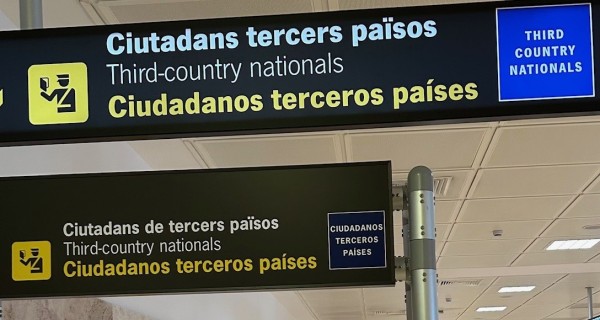Introducing the Entry/Exit System: Are you ready for the EES?

As from 12 October 2025, the Entry/Exit System (hereafter: the EES) of the EU will come into effect. The EES stores and processes a substantial amount of information. This can be the primary reason as to why it has been taking the EU Member States longer than expected to implement the EES. In fact, as from 12 October 2025, the EES will be implemented gradually, with a phased rollout across the participating Member States. Some countries will opt for immediate implementation, while it will take some other countries longer to have it up and running. Undoubtedly, the EES will have its own teething problems, which can have a negative effect on some travelers. Such negative effects can potentially arise when travelers arrive at and depart from different Schengen ports. For example, a traveler arrives at a Schengen port where the EES has been fully implemented and leaves the Schengen Area via a different port where there is no implementation of the EES. The traveler’s departure could go unrecorded. How will the EES know that the traveler has left? Will the EES flag this as an overstay? In this article, we take a closer look at the EES.
The purposes of the EES
As stated in article 6 of the EES Regulation (Regulation (EU) 2017/2226), the EES serves a plethora of purposes. In summary, the EES calculates and monitors the duration of the permitted stay of the third country nationals on the basis of their entry and exit. It assists in the identification of third-country nationals who do not fulfill the admission conditions, and it allows detection of overstayers and enables the authorities to take appropriate measures. Furthermore, it allows refusals of entry to be inserted into the EES, and it gathers statistics for the purpose of risk assessment. In other words, the EES is meant to be a useful tool for border agencies when carrying out border checks.
Who is subject to the EES?
In general, non-EU citizens who do not hold a valid residence permit or a valid long-term national visa (eg. Schengen Type D visa) issued by an EU Member State will be subject to the EES. Family members of an EU citizen who do not hold an EU family member permit will also be subject to the EES. However, Heads of State/Government, senior members of the royal families, pilots and aircraft crew members etc. will not be subject to the EES.
Which data will be recorded in the EES?
For each incoming third-country national, the border authority will create an individual file, in which the border agent will record the following information/data: names, date of birth, nationalities, gender, travel document details, facial image, date and time of entry and date and time of exit, the details of the Schengen visa (if applicable) and the details of the border crossing point etc. If the passenger is from a visa exempt country (such as, Canada or the USA), the fingerprint data from the right hand, where present, will be taken as well. Otherwise, the corresponding fingerprint data from the left hand will be taken. Children under the age of 12 will not be required to give fingerprints. In relation to frequent passengers who have an existing file in the EES, certain data will be constantly updated. Where passengers use an e-gate, the data will be taken, updated and stored by the e-gate.
Additional data will be taken when a passenger is denied entry or when their authorisation for a short stay is revoked, annulled or extended.
Details of overstayers
The EES contains an automated calculator which indicates the maximum duration of an authorised stay. This automated calculator will not be applicable to family members of an EU citizen who do not hold an EU family member permit. This automated calculator shall inform the competent authorities on entry, during checks within the territory of the Schengen Area, and on exit, of any overstay.
Pursuant to articles 16(4) and 17(2) of the EES Regulation, where there is no exit data immediately following the date of expiry of the authorised stay, the entry/exit record shall be identified with a flag by the EES and the data of the third-country national who has been identified as an overstayer, shall be entered into a list which will be shared with the border, visa and immigration authorities.
How long will the personal data be stored in the EES?
When there is a match between entry and exit, the data will be stored for three years following the date of the last exit. Where there is no record of exit following the expiry of the authorised stay, the data will be stored for up to five years.
Interoperability with other EU systems
The EES system will be interoperable with other systems (such as, the Visa Information System, which is often abbreviated as the VIS). As explained in article 8 of the EES Regulation, the retrieval of visa related data from the VIS, their importation into the EES and the updating of data from the VIS into the EES shall be an automated process. Border agents will be able to retrieve data from the VIS, with a view to creating an individual file for each incoming non-EU passenger. Visa offers will also be able to retrieve data from the EES, when assessing a visa application.
In near future, after the implementation of the ETIAS (European Travel Information and Authorisation System), the EES will be interoperable with the ETIAS as well. For instance, pursuant to article 20(2) of the ETIAS Regulation, the ETIAS Central System shall verify whether the applicant is currently or has previously been reported as an overstayer in the EES.
Amendment of data
According to article 35(5) of the EES Regulation, the data of identified overstayers shall be erased without delay and shall be rectified in the EES, where the third-country nationals provide evidence showing that they exceeded the duration of an authorised stay due to unforeseeable and serious events, that they have acquired a legal right to stay or in case of errors. Likewise, should a third country national acquire the nationality of an EU Member State, their data in the EES should be erased.
Should you have any other questions about the EES and/or other areas of Dutch/European migration laws, please feel free to contact us.

Related articles
- Unemployment benefit and its impact on your Dutch residence rights
- How can an American entrepreneur obtain Dutch permanent residence?
- Dutch student visa: everything that you need to know
- Possibly longer search period for some (settled) highly skilled migrants
- Dutch American Friendship Treaty: how to renew your entrepreneur permit successfully
- Highly skilled migrant and sick leave
- Brexit permanent residence despite deregistration from the BRP system
- Removal of labour market restrictions for EU long term permit holders who study in the Netherlands
